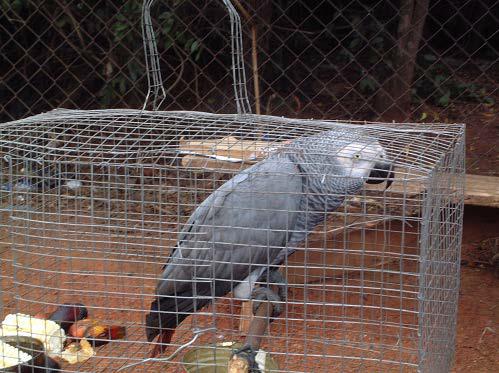Iddi Kassim
This project looks at various aspects of human use of birds in West Africa, whether for food, live trade or medicinal purposes.

African Grey Parrot (Psittacus erithacus timneh ).
This is a broad ranging project looking at the human impact on certain bird species in West Africa. There are three main aims of this work. The first is to estimate the rate of human predation on birds such as the Helmeted Guineafowl, Double-Spurred Francolin and the Stone Partridge which are regularly hunted for their meat in West Africa and to determine whether the rates of off-take are sustainable or not. It is important for conservation of such species that the level of hunting is restricted to a sustainable level but what such a level is not known for any of the birds involved. An aim of the project is to try to establish such levels using population models. If any hunting pressures are unsustainable then recommendations will be made for mitigating against this e.g. by pressing for legislation related to the granting of fewer hunting licenses or enforcing bans on the hunting of rare species.
The second aim is to study the extent of the bird trade in West Africa, whether legal or not, and devise appropriate conservation strategies for the species involved. The threat that this trade poses to the conservation of many species is well known, particularly for South American species, but there are few details for West African birds.
The third aim is to gather information on the use of birds for religious and other cultural purposes, investigate the species involved and their conservation status. Perhaps uniquely in West Africa, birds are killed and sold in markets for religious, cultural or medical purposes. Work has been done in Togo, Benin and Nigeria to identify which species are involved and what their conservation status is - but there is no such data for Ghana. Therefore a third aim of the project is establish the extent of the trade there, both openly in markets and within village communities, list the numbers and species of birds involved and highlight any of conservation concern and make recommendations for legislation to protect any vulnerable species.
The final objective is to make recommendations for conservation actions related to three topics to be investigated.